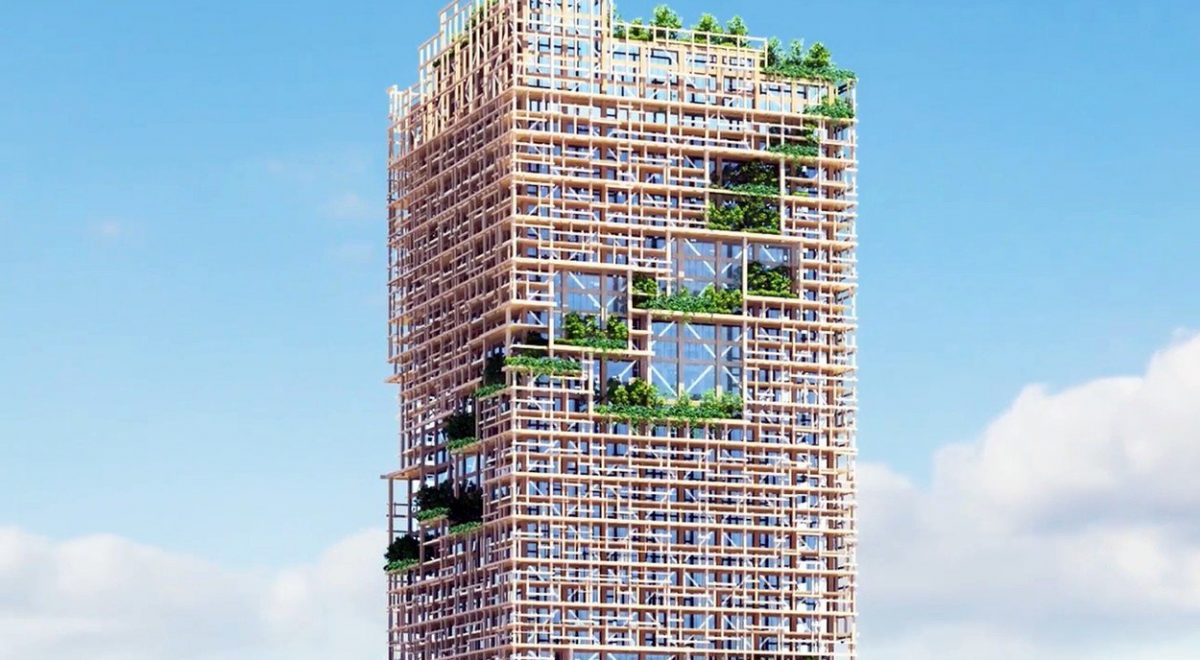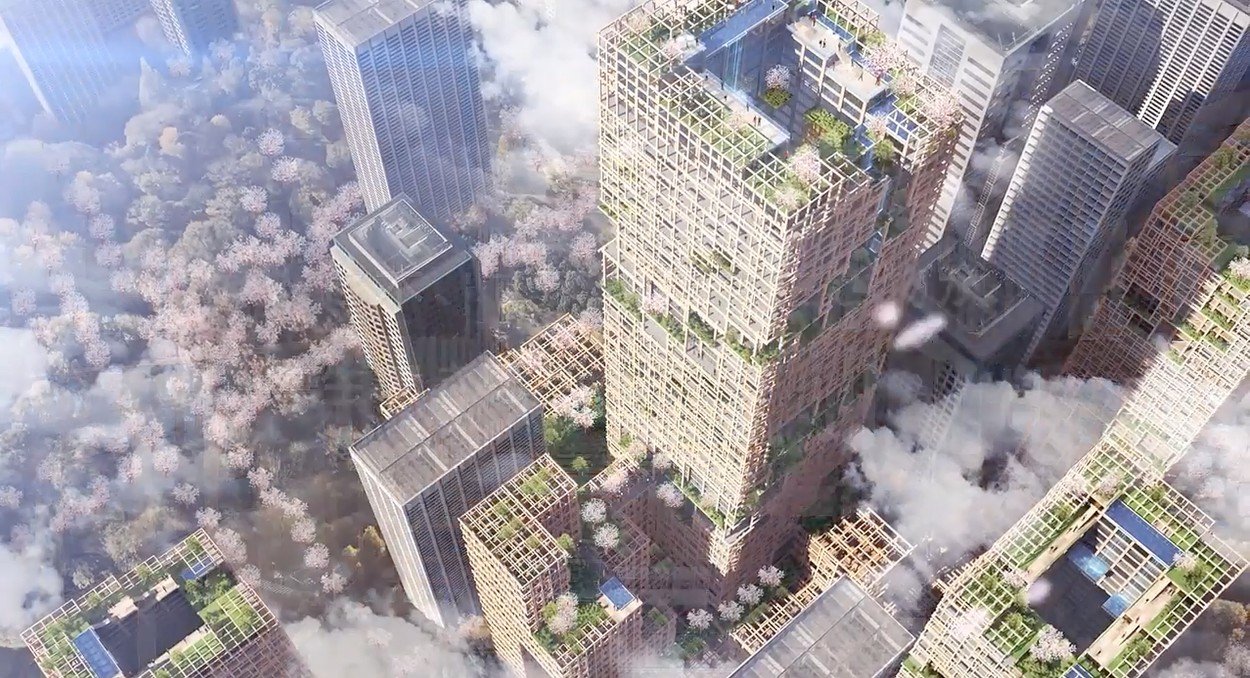
Although the cost of building will be double the construction of a conventional tower, the long term benefits will make it cheaper to run and recoup money. When maintenance is required, old wood can be taken away and recycle. Timber and forest management Sumitomo Forestry part of one of Japan’s largest business conglomerate, plans to complete the W350 Project in 2041 to mark its 350th anniversary.
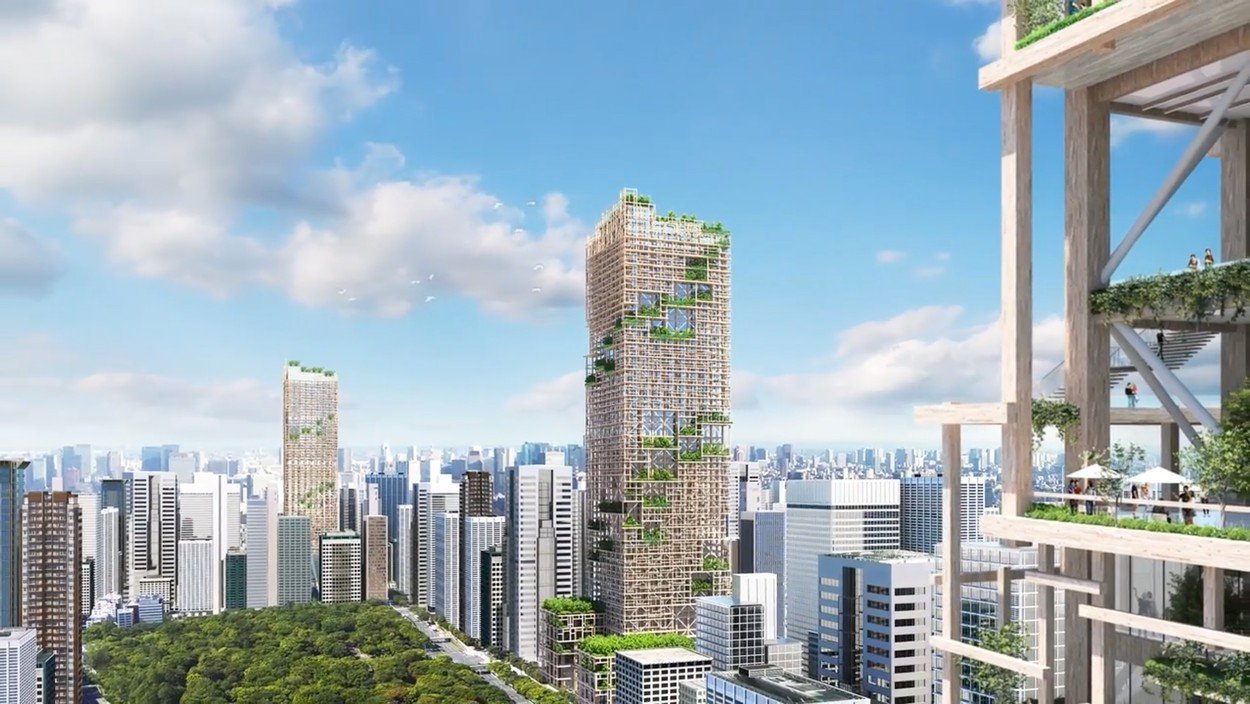
The ultimate aim, the company said, is to create an environment-friendly city of high-rise buildings made of wood that also helps to “transform the town into a forest”. The completed tower will house shops, offices, a hotel and residential units, while the designers’ sketches show broad balconies covered with greenery, a garden roof, soaring internal open spaces and water features.
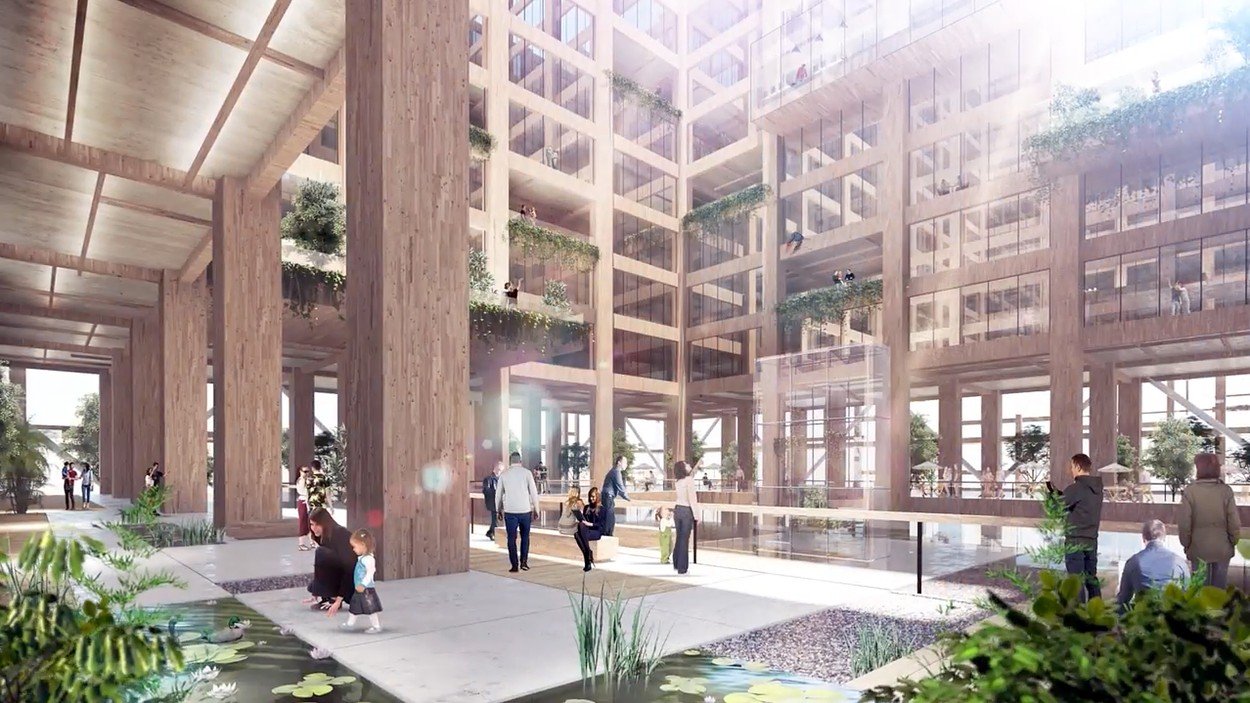
When completed, the W350 Project will be both the tallest building in Japan and tallest wooden structure in the world. The record for the tallest primarily wood en building in the world is presently held by Brock Commons Tallwood House, a 53 metre/ 174-foot-high student accommodation at the University of British Columbia in Vancouver. Japanese regulations have previously made it difficult for designers to use wood in residential or commercial-use properties.
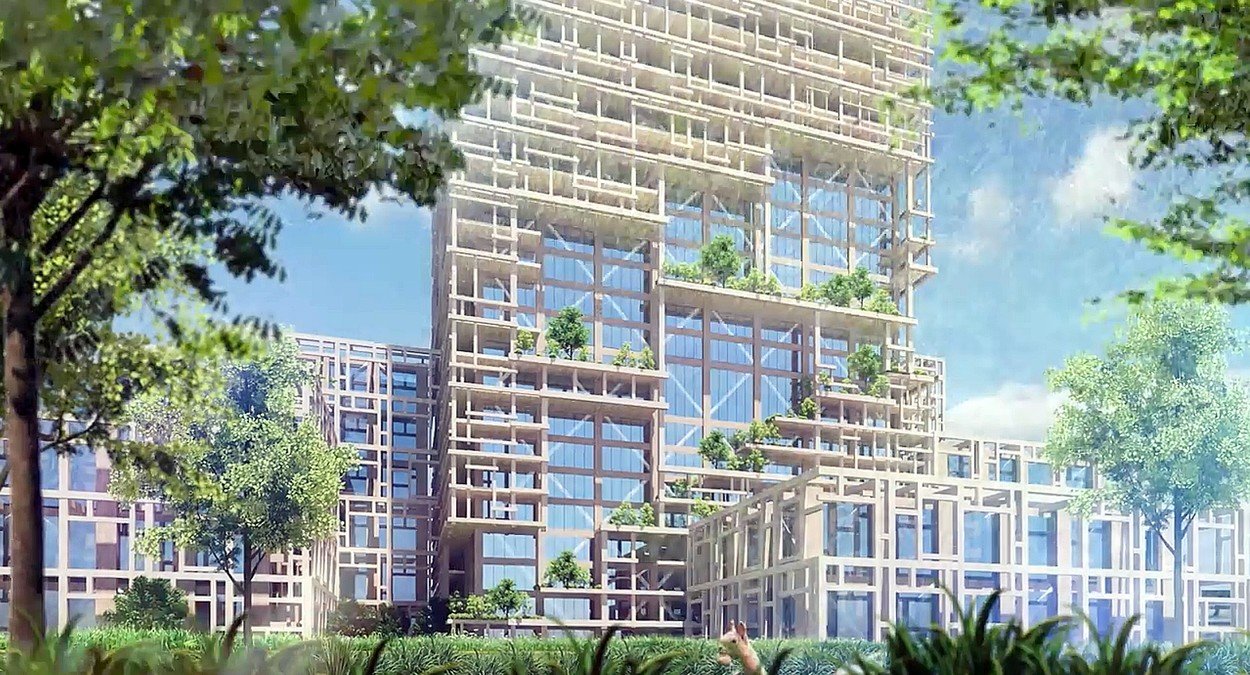
The concept for the building has been drawn up by Sumitomo’s Tsukuba Research Laboratory, which has devised a plan for a skyscraper with 70 stories above ground and made of a combination of wood and steel, with wood accounting for 90 percent of the construction material. The tower will require more than 184,000 cubic metres / 6.5 million cubic feet of wood. The cost of the project has been estimated at Y600 billion Yen / £4.2 billion GBP / €4.73 billion Euros / $5.9 billion USD.
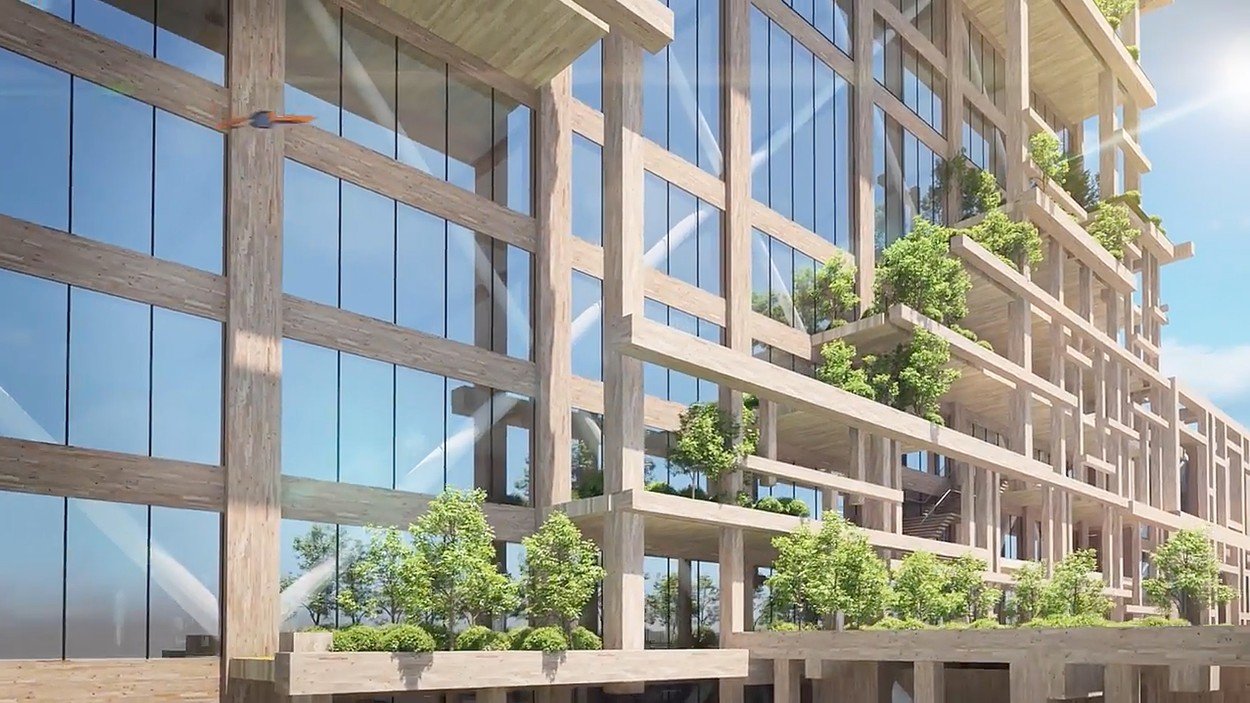
The company is working with architectural designers Nikken Sekkei and the plans call for a braced tube structure that is able to withstand strong winds and the earthquakes to which Japan is prone.The planned structure will use a braced tube structure in which steel frame vibration control diagonal braces are positioned inside a column and beam structure, made from a combination of wood and steel. The outermost side is designed with balconies that continue around all four sides of the building. The balcony part gives the high-rise building a space in which people can enjoy fresh outside air, rich natural elements and sunshine filtering through foliage.
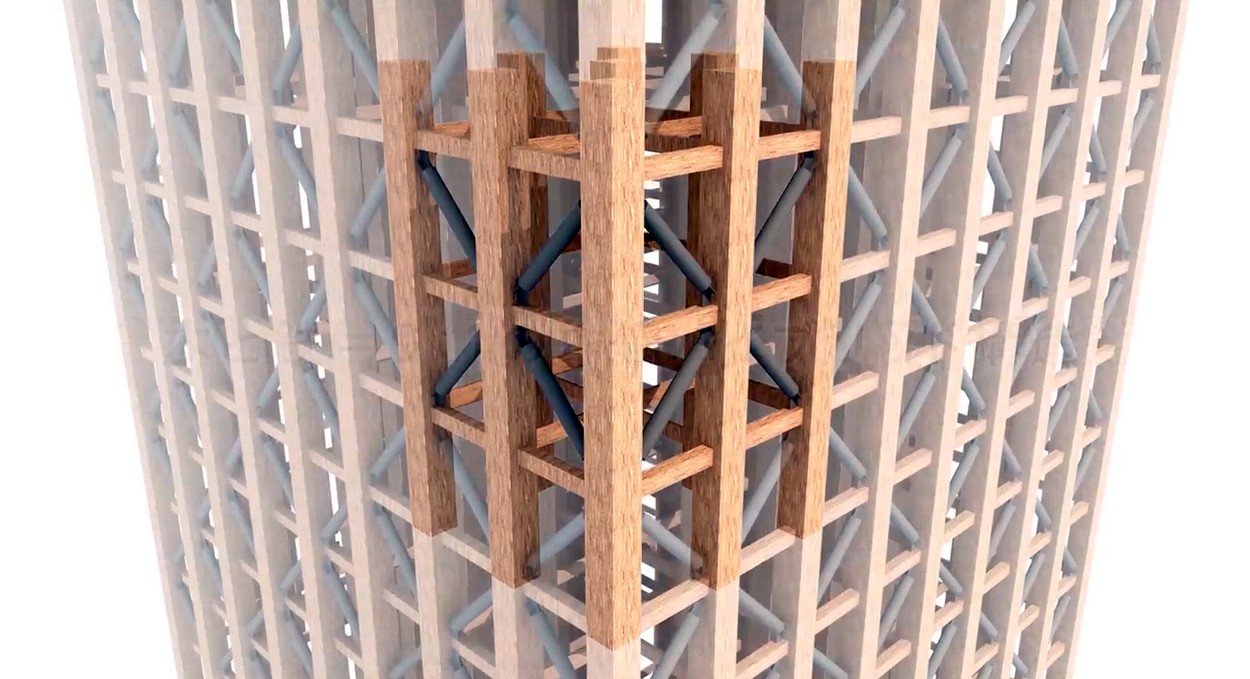
A spokesman said:” The greenery connects from the ground to the top floors through the balcony part, and it offers a view of biodiversity in an urban setting. “The interior structure is of a pure wood, producing a calm space that exudes the warmth and gentleness of wood. “The spokesman added: “ We are accelerating research and technological development in the fields of resources, materials, and building through technological development of wooden architecture for high-rise buildings. “Such buildings create a comfortable environment for both plants and living organisms, providing a pleasant space for the people living there and in the surrounding city. “These structures are like a forest, a habitat for living things. “The number of wooden buildings in urban areas is increasing. “Under this concept, greenery on the earth will contribute to buildings and cities, making over cities as forests.“
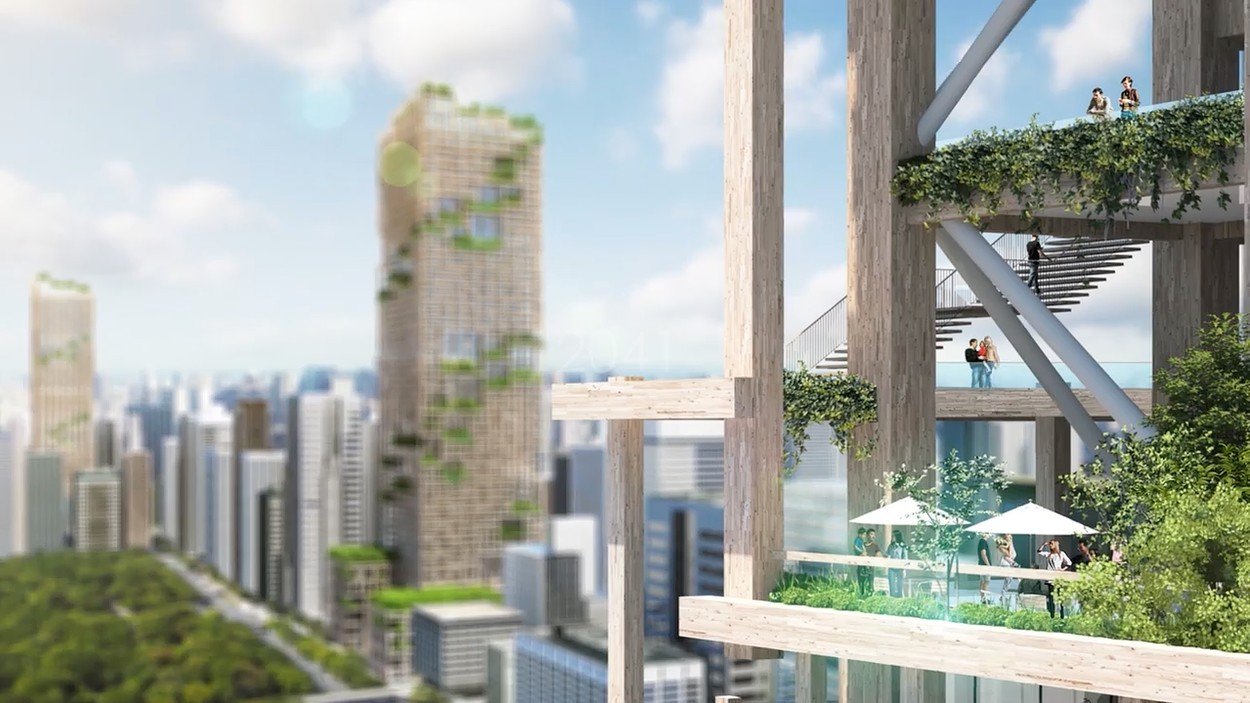
Buildings that are full of greenery will form a network that is linked to the biosphere of living creatures such as wild birds and insects, contributing to the biodiversity of cities. “The total construction costs of the W350 Plan have been estimated to be almost double that of a conventional high-rise building constructed with current technology. “Going forward, the economic feasibility of the project will be enhanced by reducing costs through technological development. “The project offers the advantages of the re-use of timber, urban development that is kind for humans, and the vitalization of forestry. “Wooden construction will increase through the optimal use of the strengths of trees. We will make every effort to further enhance fire and seismic resistance as well as durability, thoroughly reduce construction costs, develop new materials and construction methods, and develop trees that will be used as resources.“ We will strive to create environmentally-friendly and timber- utilizing cities to Change Cities into Forests.”The company says it will also help with the management of forest which were planted at the end of World War II. O


